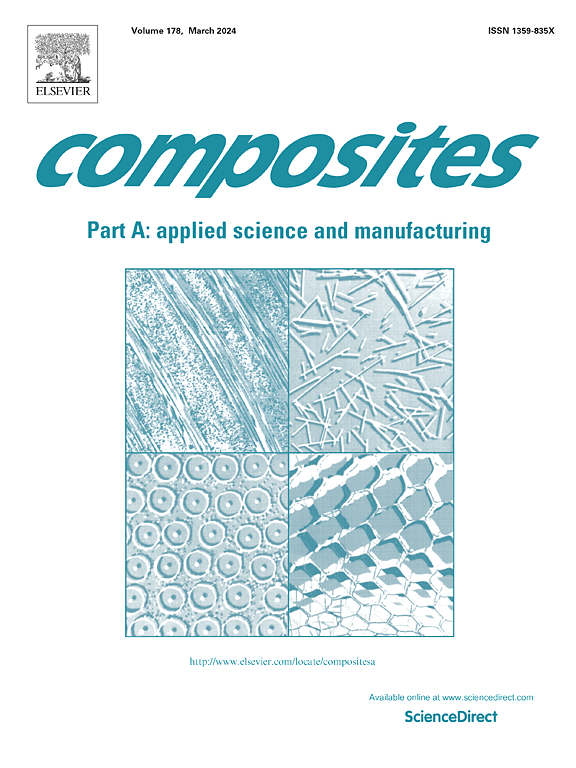In-situ damage behavior and dielectric responses of GFRP by coupled electrical-tensile testing: Influence of fiber orientation
IF 8.1
2区 材料科学
Q1 ENGINEERING, MANUFACTURING
Composites Part A: Applied Science and Manufacturing
Pub Date : 2025-05-02
DOI:10.1016/j.compositesa.2025.108986
引用次数: 0
Abstract
In this paper, in-situ dielectric properties of GFRPs with different fiber orientation angles of 0°, 15°, 30° and 45°, are investigated under combined electrical and mechanical tensile stresses. The results show that there is a nonlinear relationship between the dielectric polarization and mechanical stress. This is attributed to the competitive processes between the enhanced interfacial polarization and introduction of more cavities under high stress level. The dielectric loss of GFRPs reaches the maximum for 45° samples under 60% tensile stress, with an increase of 27.25%. Compared to 0° samples, the influence of tensile stress on the partial discharge and breakdown strength becomes more significant when the orientation angle is above 30°, indicating interface debonding has become the dominant role in material damage. Understanding the evolution of damage behaviors and dielectric properties under different fiber orientations is of great significance to optimize material design and improve electrical insulation performance of GFRPs.
基于电-拉耦合试验的GFRP原位损伤行为和介电响应:纤维取向的影响
本文研究了不同纤维取向角(0°、15°、30°和45°)的gfrp在电气和机械联合拉伸应力作用下的原位介电性能。结果表明,介质极化与机械应力之间存在非线性关系。这是由于在高应力水平下界面极化增强和空穴增多之间的竞争过程。当拉伸应力为60%时,45°试样的介电损耗达到最大值,增加了27.25%。与0°试样相比,当取向角大于30°时,拉应力对局部放电和击穿强度的影响更为显著,表明界面脱粘已成为材料损伤的主导因素。了解不同纤维取向下gfrp的损伤行为和介电性能的演变对优化材料设计和提高gfrp的电绝缘性能具有重要意义。
本文章由计算机程序翻译,如有差异,请以英文原文为准。
求助全文
约1分钟内获得全文
求助全文
来源期刊

Composites Part A: Applied Science and Manufacturing
工程技术-材料科学:复合
CiteScore
15.20
自引率
5.70%
发文量
492
审稿时长
30 days
期刊介绍:
Composites Part A: Applied Science and Manufacturing is a comprehensive journal that publishes original research papers, review articles, case studies, short communications, and letters covering various aspects of composite materials science and technology. This includes fibrous and particulate reinforcements in polymeric, metallic, and ceramic matrices, as well as 'natural' composites like wood and biological materials. The journal addresses topics such as properties, design, and manufacture of reinforcing fibers and particles, novel architectures and concepts, multifunctional composites, advancements in fabrication and processing, manufacturing science, process modeling, experimental mechanics, microstructural characterization, interfaces, prediction and measurement of mechanical, physical, and chemical behavior, and performance in service. Additionally, articles on economic and commercial aspects, design, and case studies are welcomed. All submissions undergo rigorous peer review to ensure they contribute significantly and innovatively, maintaining high standards for content and presentation. The editorial team aims to expedite the review process for prompt publication.
 求助内容:
求助内容: 应助结果提醒方式:
应助结果提醒方式:


